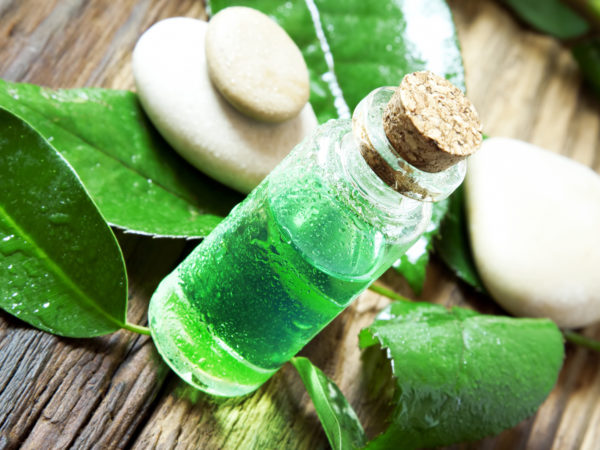Treating Annoying Summer Blisters

What Are Blisters?
Blisters are fluid-filled sacs that look like fleshy bubbles on the skin. Blisters can be a sign of conditions, such as shingles , eczema , sunburn , herpes , or contact with poisonous plants such as poison oak . However, the most familiar type occurs on hands and feet as a result of friction from a repetitive motion. Studies suggest that genetics might play a role in how easily skin blisters , but understanding the causes and taking preventative measures go a long way in avoiding them.
What Are The Symptoms?
Blisters begin with redness over the spot where irritation is occurring. Eventually, the painful, bubble-like sac appears on the affected area. If the fluid sac is ruptured, it can become infected and begin to form pus. If the infection progresses, red streaks on the skin running upward from the site of the blisters indicate cellulitis. If a streak develops or you begin to run a fever, seek prompt medical treatment.
What Are The Causes Of Blisters?
Ill-fitting shoes rubbing on the skin’s surface can cause blisters on the feet, but often these bothersome bubbles are simply the result of stress from repetitive motion. When the skin’s top layer is being restricted from moving in sync with the bones and the layers of epidermis underneath, friction between these layers causes a tear in the tissue that fills with fluid from the capillaries.
You’re most likely to get blisters when your feet perspire and your socks or insoles stick to your skin – the friction from walking or jogging pulls this top layer of skin back and forth over underlying tissue.
Another common location for blisters is on the hands. Blisters develop as the result of unusual, chronic irritation (from, for example, manual labor with shovels or other tools) of hands that have not previously developed protective calluses.
What Preventative Measures Can Be Taken To Avoid Blisters?
Leather-palmed work gloves can prevent blisters on the hands and you can reduce the chances of developing blisters on your feet by wearing a sock liner under a heavier pair of socks – the fabrics rub against each other instead of rubbing against your feet. Polypropylene sock liners are preferable to cotton because they wick perspiration away from the skin to keep your feet dry.
A study published in April 2016 of the Clinical Journal of Sports Medicine revealed that paper tape (surgical tape) placed on the blister-prone areas of ultra marathoners’ feet during a 155-mile race seemed to be an effective measure of blister prevention, with one foot left un-taped as a control.
Another step toward prevention is to protect the irritated area as soon as you see signs of redness, which signal the development of a blister. Apply paper tape or a flannel-covered adhesive bandage called moleskin (many hikers also swear by duct tape, but no studies have confirmed its effectiveness) on the vulnerable area. You can use a water-based gel-pad dressing such as “2nd Skin” by Spenco or a blister plaster, but it should be a temporary solution – approximately one hour. This is because hydrocolloid bandages can actually over-hydrate the skin and increase chances of developing a blister. The same goes for petroleum jelly, mineral oil, and other lubricants.
I warn against using foot powders and antiperspirant to prevent blisters. While some laboratory studies show the effectiveness of powders in keeping the feet dry, if moisture combines with the powder, it can increase frictional force. Three different studies of marching British soldiers showed no protective benefit of the foot powders, with one study revealing an increase in blister formation. The concern with using antiperspirant, beyond that of containing harmful ingredients such as aluminum , is that it commonly irritates the skin, which can prove as uncomfortable as blisters.
What Are Conventional Blister Treatments?
Most blisters don’t require medical treatment and can be handled by first aid that you can administer yourself. Once a blister forms, you may need to pierce it before you find relief. Be certain your tetanus shot status is up to date. If not, get a booster from your doctor. Blisters the size of a pea or smaller do not likely need any treatment and will heal on their own. Larger blisters may require simple drainage and care. If you choose to drain and treat, take these precautions:
- Make sure your hands and fingers are clean.
- Sterilize a clean, new needle in a flame until it glows red and allow it to cool or simply wipe thoroughly with rubbing alcohol. Use it to puncture the edge of the blister nearest the skin to keep the blister dome intact.
- Gently press on the blister to let out the fluid. Leave the loose skin in place; this will help keep germs out and aid in faster healing.
- Dab on some antibiotic ointment or clean your skin with a sterilizing-wipe and cover the area with gauze and tape.
What Therapies Does Dr. Weil Recommend For Blisters?
Dr. Weil recommends the first aid measures outlined above for blister treatment. Instead of antibiotic ointment, you can use tea-tree oil on the site of blisters that you have lanced and drained. If you have diabetes, cancer or other disease process that puts you at increased risk for infection see your doctor. Prevention is key. To prevent blisters, learn to recognize “hot spots,” the places on your feet where blisters are most likely to form. Before you head to the golf course or hit the trailhead for a hike, put some paper tape (surgical tape) or moleskin on the vulnerable area.
Reviewed by Ben Gonzalez, M.D. Sep 2016.
Sources:
nlm.nih.gov/medlineplus/ency/article/003939.htm nlm.nih.gov/medlineplus/ency/article/000858.htm nlm.nih.gov/medlineplus/ency/article/000832.htm nlm.nih.gov/medlineplus/ency/article/003227.htm nlm.nih.gov/medlineplus/ency/article/000606.htm healthline.com/health/outdoor-health/poison-oak-pictures-remedies dermnetnz.org/reactions/friction-blisters.html ncbi.nlm.nih.gov/pubmed/26174537
oandp.org/publications/jop/2009/2009-18.pdf podiatrytoday.com/how-to-manage-friction-blisters
sciencedaily.com/releases/2016/04/160411112237.htm
podiatrytoday.com/how-to-manage-friction-blisters and Nacht S, Close J, Yeung D, et al. Skin friction coefficient changes induced by skin hydration and emollient application and correlation with perceived skin feel. J Soc Cosmet Chem 1981;32:55-65.









